Furo: Tea and Rice
Mid-May is still, in 2023, in a lunar ‘leap’ year, so that the first of May was the 22nd of the 3rd lunar month. In Japan, the month of May is called by its old name of Satsuki. Satsuki is identified with the lunar calendar. The word satsuki was derived from the old word sa, which means cultivating, and joined with tsuki, 月, month, and became satsuki as the month of rice cultivation. The kama used in Chanoyu has roots in the meshi-gama, 飯釜, rice-kettle. There are stories of people having only one kama, and using it to cook rice and boil water for tea. There are kama for Tea modeled on rice kettles, and at times rice is cooked in such kama placed on the furo and the ro.
The Kanji for rice is 米, kome, which is symbolic of the center of the world. There is a theory that the month of planting, sanae: Sanae-zuki was abbreviated to Satsuki, but sa of sanae is also said to be the etymology of sa of cultivation. Sa means rice planting and the god of rice fields. The festival held at the beginning of rice planting is called saori, and the festival at the end of rice planting to send off the god of rice fields is called sanaburi. The Kanji, 皐, means rice dedicated to the gods.
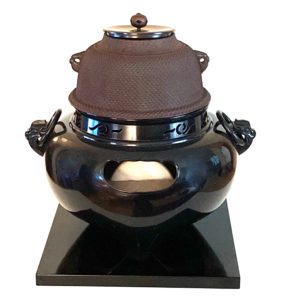
The first official use of the portable fu-ro, 風炉, wind-hearth, in the Tearoom in the summer half of the year is called Sho-bu-ro, 初風炉, first-wind-hearth, is. The traditional date for the shoburo is May 10th . The Buddhist deity who presides on the tenth day of each month is Kon-pi-ra Gon-gen, 金毘羅権現, Gold-assist-spread Authority-present, is a Shintō-Buddhist, god of merchant sailors, and god of the Shu-gen-dō, 修験道, Discipline-verify-way, a sect originating in the mountain shrine, Ko-to-hi-ra-gū, 金刀比羅宮, Gold-sword-like-spread-palace, of Kagawa Prefecture.
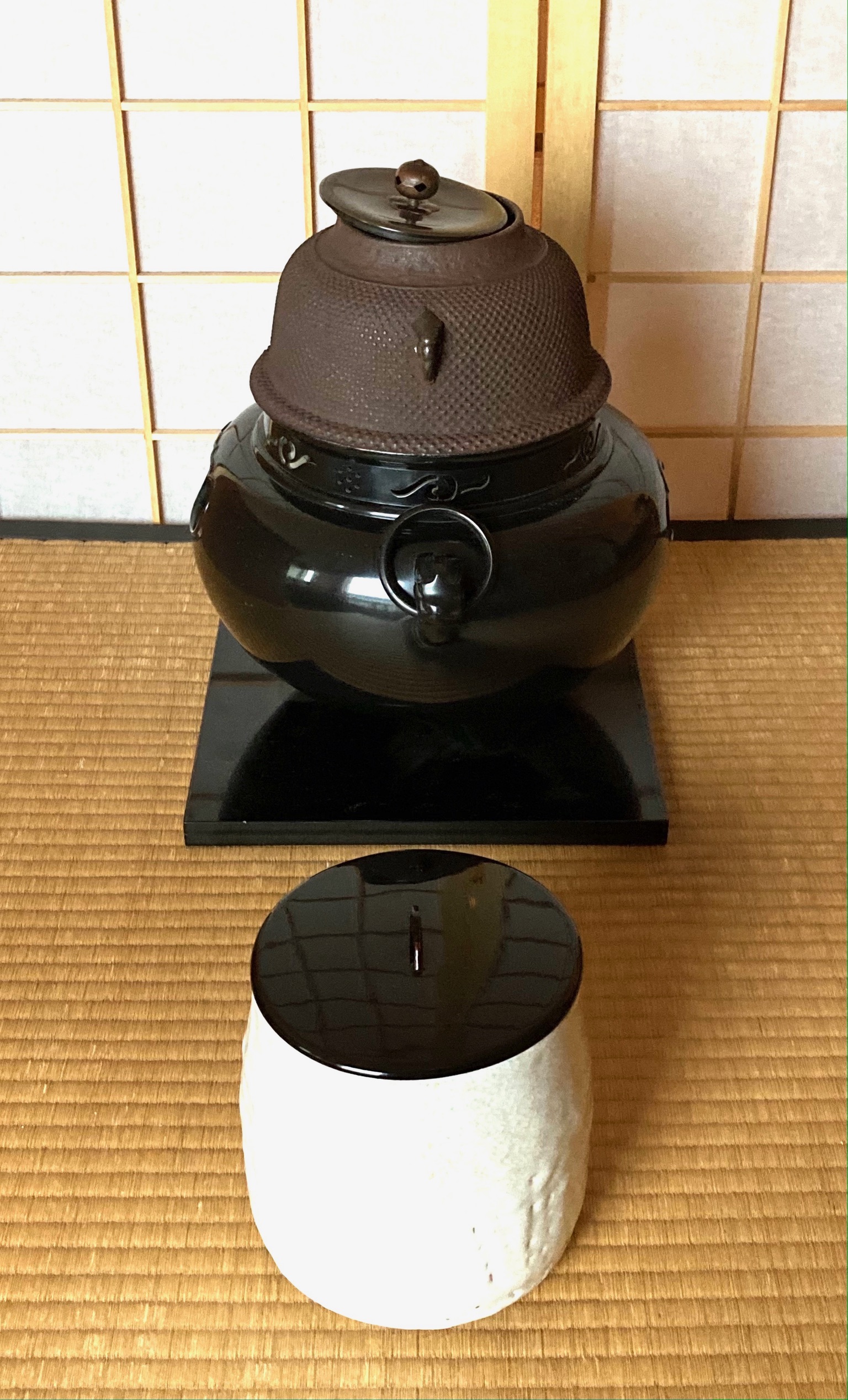
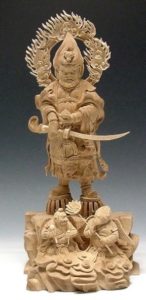
Konpira, also read Kumbira, was originally a crocodile, wani, 鰐, that lived in the Ganges river, and was the vehicle of Ganga, goddess of the River, and was the guardian of maritime traffic. In Japan, he is regarded as a sea god, a dragon god, and a deity for sea disasters and rain. As the god of rain he has also been the god of bountiful harvests. For this reason, people involved in agriculture also worshiped Konpira-san, especially in areas with little rain. In Buddhism, he is one of the Twelve Divine Generals of Yaku-shi, 薬師, Medicine-master, guardian gods of Buddhism who helped Shakyamuni. In Shintō, Konpira Daigongen is named Kotohira-gū, 金刀比羅宮, Gold-sword-compare-spread-palace. Konpira, however he is known, is so powerful that he is revered in both Buddhism and Shintō.
Ku-bi-ra Tai-shō, 宮毘羅大将,Palace-help-spread Great-general, is colored yellow, is armed with a vajra, and is identified with the Rat, which places him in the north. Kubira is depicted holding various implements, including a double-edged sword in his right hand, and a treasure orb on his left hand held near his heart. In Shintō, he is known as Konpira. Konpira holds a bow in his left hand, and an arrow in his right. Depictions of Konpira rarely include a crocodile. The crocodile is alternately identified as a large, fierce fish with a dragon-like head. The crocodile is associated with another mystical creature, the ma-ka-ra, 摩伽羅, rub-attend-spread, also used as ornamental acroteria for Buddhist temple roofs, such as Tō-dai-ji, 東大寺, East-great-temple, in Nara.
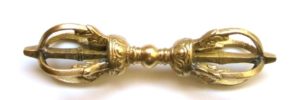
The vajra has many different forms and is composed of various elements. The center is a globe or sphere with an eight-petal lotus on each side, supporting two or more sea creatures, such as the makara with long pointed tongues that form the prongs. The lotus and the makara are associated with water. The water association provides a metaphorical protection against fire. The lotus plant grows only in fresh water with muddy grounds. Such bodies of water include lakes. This connection may be enough for the hibashi to be identified with the I Ching/Eki-yō, trigram, Da, ☱, for Lake.
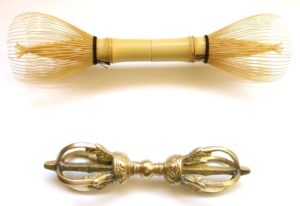
Another deity who has their Ennichi on the 10th of each month is Nichi-gatsu Tō-myō-butsu, 日月燈明仏, Sun-moon Lamp-light-buddha. He preached the Ho-kke-kyō, 法華經, Law-flower-sutra, the Lotus Sutra, to twenty thousand buddhas. It is said that he had brilliance of the sun, moon, and lamps. It is believed that Tōmyō Butsu is one of the many names of Amida. Although the name of Tōmyō is relatively obscure, Amida’s name is supremely known, and surely has many associations with Chanoyu and the furo. The name, Amida is Amitabha in Sanskrit, which means ‘infinite light’.
Perhaps the date for the shoburo on the 10th of May is that it is approximately the last of the 21 days of cha-tsumi, 茶摘, tea-pick. Traditionally, tea is picked on hachi-jū-hachi-ya, 八十八夜, eight-ten-eight-night, after Ri-sshun, 立春, Start-spring. It is impossible to pick all of the tea on one day, so picking begins ten days before, and ends ten days after hachi-jū-hachi-ya. The total number of days is twenty-one, ni-jū-ichi nichi, 二十一日, two-ten-one days, and this is written in the Kanji for the names of many teas, mukashi, 昔, which is composed of twenty, 廾, one, 一, and day, 日, and is read mukashi meaning ‘past times’.
Hachi-jū-hachi-ya occurs around the first days of May. This is calculated by the solar calendar. In year 2023, hachi-jū-hachi-ya is on May 2, and May 10 is eight days afterward. Eight is a very symbolic number, so maybe shoburo is eight days after hachi-jū-hachi-ya and chatsumi.
F0r further study, see also: Tea in May, Go-gatsu, Furo: Style and Form, Furo to Ro

